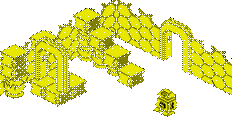







|
 Connectors Connectors
- AA (LR6) battery tray - 2 two AA batteries (which should last between 25-30 hours under normal use)
- Backup battery coin tray - use type CR1620 as replacement (typical life is around 15 months)
- 6-pin Serial and Parallel port
- Power supply socket with 9V @ 150mA with negative tip for Series 3, 3a and 3c, or 9V 250mA for Series 3mx
 Technical Facts Technical Facts
- The Series 3 machines are based around Psion's SIBO (SIxteen Bit Operating system) architecture, and run Psion's own EPOC16 operating system, which is shared between the Series 3, Workabout, and Siena PDAs.
- The 6-pin Serial and Parallel port has exactly the same signals as the two SSD expansion slots.
- The sound system o the Series 3 implements beeps via a piezo transducer, which is able to provide 2 volume levels. On the 3a, there is a bidirectional D/A converter, speaker and microphone, which together support the recording and playback of digitally-recorded sound, which is compressed and expanded between 8 and 13 bits by hardware in an ASIC using the Alaw algorithm.
- Memory is split into process and storage. Storage memory is only used for storing data. Process memory is only used for running programs by the microprocessor. Process memory is limited to 512K. There is no storage memory on Psions with less than 512K.
- Flash SSDs are cheaper than RAM SSDs because you cannot recover the space on them - they must be wiped fully.
- You can upgrade a Psion with 256K to 512K fairly easily, just by soldering in the two missing SRAM chips onto the board. Upgrading one of these to 1 or 2 MB is not possible, however, since these models use a different ROM to access the larger memory
 Trivia Trivia
- The Psion 3a serial link is more than just a simple cable. The "3-Link" contains a ROM SSD with software (in the 'soap on a rope'). For the 3c and 3mx the serial cable is just a simple cable
|
| |
|
|
 Connectors
Connectors Technical Facts
Technical Facts Trivia
Trivia








